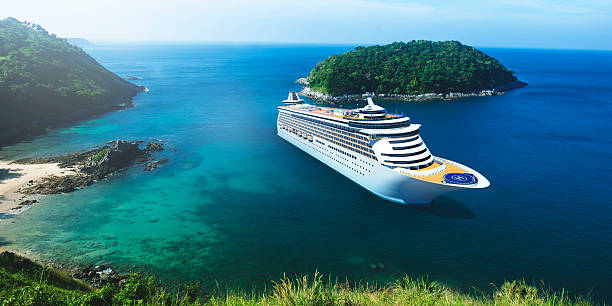The World of Luxury Bag Brands
Introduction to Luxury Bags
Luxury bags are more than just accessories; they are symbols of status, taste, and personality. The allure of owning a luxury bag transcends its functional use. For many, it represents a timeless investment, a piece of art, and an heirloom. The luxury bag market has evolved significantly over the years, with brands continuously innovating while maintaining their iconic designs and high standards of craftsmanship.
The Evolution of Luxury Bags
The history of luxury bags dates back to the early 20th century when fashion houses like Louis Vuitton and Hermès began to craft exquisite bags that combined functionality with opulence. Over the decades, the designs have evolved, reflecting changes in fashion trends, societal norms, and technological advancements. Today, luxury bags incorporate innovative materials and sustainable practices, appealing to the modern, conscious consumer.
Iconic Luxury Bag Brands
Several brands have become synonymous with luxury bags. Each has its unique history, design philosophy, and signature styles that distinguish them from others. Here, we delve into the essence of a few legendary brands.
Louis Vuitton: The Pinnacle of Luxury
Louis Vuitton, founded in 1854, is renowned for its monogram canvas and timeless designs. The brand started with high-quality luggage and expanded into a range of handbags that exude elegance and sophistication. Bags like the Speedy, Neverfull, and Alma are iconic pieces that have stood the test of time. Louis Vuitton continually reinvents its collections, collaborating with contemporary artists and designers to keep the brand relevant and coveted.
Hermès: The Epitome of Craftsmanship
Hermès, established in 1837, epitomizes luxury and craftsmanship. The brand’s dedication to quality is evident in its meticulous hand-stitching and use of premium materials. The Birkin and Kelly bags are the most sought-after in the world, often seen as investment pieces due to their enduring value and exclusivity. Hermès bags are not just products but works of art, with each piece taking several days to complete by a single artisan.
Chanel: Timeless Elegance
Chanel, founded by Coco Chanel in 1910, revolutionized the fashion industry with its modern and elegant designs. The Chanel 2.55 bag, introduced in 1955, remains an iconic accessory, known for its quilted leather, chain strap, and double C clasp. Chanel’s bags are synonymous with timeless style and sophistication, appealing to women who appreciate classic fashion with a contemporary twist.
Gucci: Bold and Distinctive
Gucci, established in 1921, is celebrated for its bold designs and distinctive motifs. The brand’s bamboo handle bags and GG Marmont line are highly recognizable and favored by fashion enthusiasts worldwide. Gucci continuously pushes the boundaries of design, blending traditional craftsmanship with innovative elements to create bags that are both trendy and timeless.
Prada: Minimalist Luxury
Prada, founded in 1913, is known for its minimalist and refined aesthetic. The brand’s nylon backpacks and Saffiano leather bags have become modern classics. Prada’s commitment to understated elegance and high-quality materials makes its bags a staple for those who appreciate subtle luxury and sophistication.
Dior: Feminine and Romantic
Dior, established in 1946, brings a touch of femininity and romance to the world of luxury bags. The Lady Dior bag, named after Princess Diana, is a symbol of elegance and grace, featuring the brand’s signature cannage stitching and dangling charms. Dior continually reinvents its collections, blending traditional craftsmanship with contemporary design to create bags that appeal to modern women.
The Craftsmanship Behind Luxury Bags
The allure of luxury bags lies in their exceptional craftsmanship. These bags are often handmade by skilled artisans who use traditional techniques passed down through generations. The process involves meticulous attention to detail, from selecting the finest materials to the final assembly. The result is a product that not only looks beautiful but also stands the test of time.
Materials Used in Luxury Bags
Luxury bags are crafted from a variety of high-quality materials, each chosen for its durability and aesthetic appeal. Leather is the most common material, with different types such as calfskin, lambskin, and exotic skins like crocodile and ostrich. Fabric options include canvas, nylon, and tweed, often treated to enhance their durability and resistance to wear and tear.
The Role of Innovation in Luxury Bags
Innovation plays a crucial role in the evolution of luxury bags. Brands continuously explore new materials, techniques, and technologies to enhance the functionality and appeal of their products. Sustainable practices are increasingly important, with many luxury brands adopting eco-friendly materials and processes to reduce their environmental impact.
The Market for Pre-owned Luxury Bags
The market for pre-owned luxury bags has grown significantly in recent years. Many consumers view these bags as investment pieces that retain or even appreciate in value over time. Platforms specializing in authenticated pre-owned luxury bags offer a more accessible way to own these coveted items, contributing to the sustainability movement by promoting the reuse of luxury goods.
The Influence of Celebrity Endorsements
Celebrity endorsements have a significant impact on the popularity of luxury bags. Celebrities often serve as brand ambassadors, showcasing the latest collections and setting trends. Their influence extends beyond their immediate fan base, reaching a global audience and driving demand for specific brands and styles.
The Cultural Impact of Luxury Bags
Luxury bags have a profound cultural impact, often serving as status symbols and reflections of personal style. They are featured prominently in media, from fashion magazines to movies, and play a role in shaping fashion trends. Owning a luxury bag is often associated with success and sophistication, making them highly desirable accessories.
The Future of Luxury Bags
The future of luxury bags lies in balancing tradition with innovation. As consumer preferences evolve, brands must continue to adapt by incorporating sustainable practices and exploring new design possibilities. The rise of digital platforms and the importance of social media in shaping fashion trends will also influence how luxury bags are marketed and perceived.
Conclusion: The Timeless Appeal of Luxury Bags
Luxury bags will always hold a special place in the world of fashion. Their timeless appeal, exceptional craftsmanship, and status as symbols of elegance and sophistication ensure their continued relevance. As brands innovate and evolve, the allure of luxury bags will only grow, captivating new generations of fashion enthusiasts and collectors.
.jpg)



